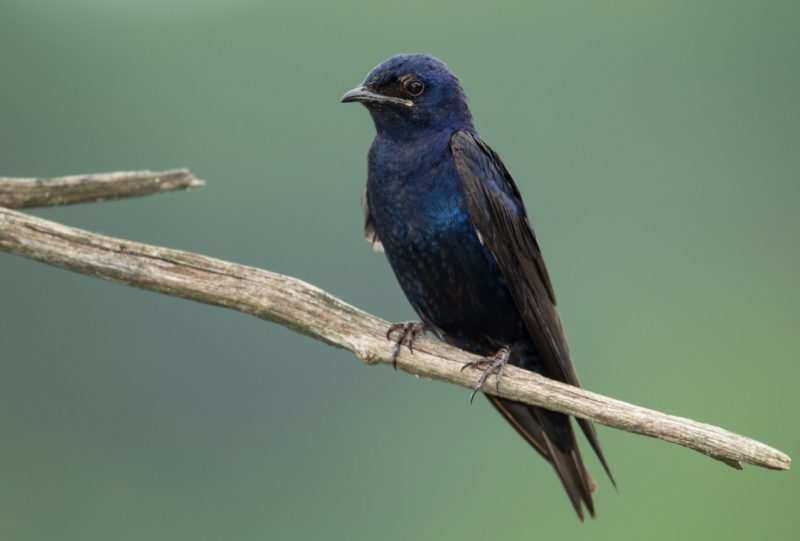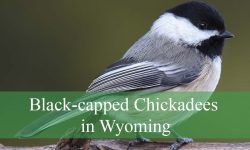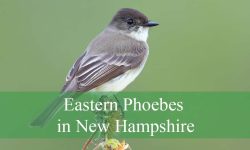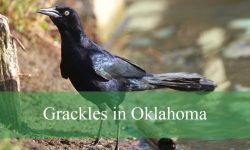Purple martins return to Missouri each spring as lively flashes of motion gliding through open air. Their deep purple sheen, rapid wingbeats, and effortless aerial dives make them stand out immediately. Their calls carry across fields and lakes, adding a distinct sound to early warm months. Yet most people only recognize their dark purple bodies and graceful wingbeats without truly understanding the complex behaviors behind their presence.
Missouri’s mix of forests, open fields, lakes, rivers, and suburban yards has long made the state one of the strongholds for purple martins in the central United States. These birds rely heavily on human provided housing, forming an unusual relationship that has shaped their survival for centuries. Their habits, migrations, feeding strategies, and colony dynamics reveal a bird far more complicated than its familiar summer appearance.
This article explores hidden secrets about purple martins in Missouri, offering a deeper look at their biology, movement patterns, ecological importance, and seasonal behavior that most observers never notice.
Understanding Purple Martins in Missouri

What Purple Martins Really Are
Purple martins are the largest members of the swallow family in North America. Adult males display a uniform glossy purple-black sheen, while females and juveniles show lighter underparts with a mix of gray and brown. Their long, pointed wings and slightly forked tails help them maneuver at high speeds, allowing them to capture prey entirely in flight. This distinctive body structure supports their aerial lifestyle.
Although often seen near human settlements, purple martins remain deeply tied to natural ecological cycles. They are long distance migrants that spend winter in South America before returning to Missouri each spring. Their arrival aligns with insect availability, day length, and weather patterns across the Mississippi River Valley. These connections make them one of the most seasonal species in the region.
Why Missouri Is a Stronghold for Purple Martins
Missouri offers ideal habitat conditions for purple martins during breeding season. Open skies and warm summer temperatures provide abundant flying insects that serve as their primary food source. River floodplains, lakesides, and suburban wooded edges create natural aerial corridors where insects gather. Missouri’s long history of people providing martin houses has also shaped the species’ distribution across the state.
In much of eastern North America, purple martins depend almost entirely on humans for nest sites. Missouri residents maintain thousands of martin houses, gourds, and multi-compartment structures each year. These nesting sites create stable breeding colonies while offering protection from predators and competition. This partnership significantly boosts martin survival.
Where They Live Across the State
Purple martins occur across both rural and urban areas of Missouri. They favor open environments where they can hunt efficiently, often near water bodies that support high insect density. Birds frequently establish colonies in backyards, farms, parks, and lakeside properties where suitable housing is available. Their distribution follows human-built martin houses more than natural habitat structure.
Because of their migratory nature, martins appear only seasonally in Missouri. They begin arriving in late winter and early spring, then depart by late summer as insect populations decline.
Hidden Behaviors That Most People Miss
Their Aerial Lifestyle Is Remarkably Specialized
Purple martins spend nearly all their waking hours in the air. They drink, bathe, feed, and even socialize while flying. Their wings and tails work together to maintain precise control during rapid twists and turns. Their speed allows them to scan large areas and capture fast moving insects that other birds cannot pursue.
Their aerial lifestyle demands excellent coordination and stamina. Martins often travel miles each day searching for insect swarms, and their ability to react instantly to wind shifts makes them highly efficient hunters. This elevated level of specialization sets them apart from other swallows.
Their Social Structure Is More Intricate Than It Appears
Purple martins form highly interactive colonies during breeding season. Adults greet each other with vocal chatter. Pairs coordinate nest building, feeding schedules, and territorial defense. Neighboring pairs often respond to one another’s calls, creating a continuous social network throughout the colony.
Competition within colonies can also be intense. Early arriving males compete for the best compartments within martin houses. Females inspect multiple sites before choosing a mate. This process plays a major role in shaping colony structure each year.
Their Relationship With Humans Is Unique
Purple martins in the eastern United States are almost entirely dependent on human provided housing. Historical records show that Indigenous communities offered nesting sites long before European settlers arrived. Over centuries, martins adapted so strongly to human shelters that they gradually stopped using natural cavities.
This dependence means Missouri homeowners play a direct role in martin conservation. Properly maintained houses and gourds can determine whether colonies thrive or decline. This partnership is rare among wild birds and adds an important layer to martin ecology.
Anatomy Built for Aerial Mastery
Wings Shaped for Speed and Control
Purple martins have long, narrow wings that taper to a point. These wings allow fast acceleration and tight maneuverability. Their shape supports long glides when insects are abundant and rapid bursts of speed during evasive flight.
A Tail Designed for Stability
Their slightly forked tail acts as a rudder. It helps maintain balance during sharp turns and sudden drops. The tail also aids in braking and adjusting direction when hunting in turbulent air near water or trees.
Lightweight Bodies
Their bodies are exceptionally light for their size, enabling extended flight with minimal energy cost. Their muscles are adapted to provide daily stamina necessary for long aerial foraging sessions.
A Bill Suited for Catching Insects
Their small, slightly hooked bill is tailored for catching insects in flight. Its shape allows them to snap shut efficiently as they capture prey moving at high speed. This precision supports their fully aerial feeding strategy.
Feeding Habits Across Missouri
Entirely Dependent on Flying Insects
Purple martins eat flying insects almost exclusively. Their diet includes beetles, dragonflies, flying ants, moths, and various midges that emerge from wetlands. During peak summer conditions, swarms of insects near rivers and lakes create feeding hotspots where martins gather to hunt.
Because they feed only while flying, weather plays a significant role in their daily activity. Cool or rainy days can reduce insect availability, forcing martins to adjust their foraging routes or travel longer distances.
Foraging in Open Skies
Martins make use of open landscapes where they can maneuver freely. They often fly above fields, lakes, and parks, scanning for insect activity. Their movements are fluid and continuous, resembling patterns typical of expert aerial predators.
Group Feeding Behavior
Purple martins frequently feed in groups, especially during the morning and late afternoon when insects become more active. Group feeding helps birds locate insect swarms quickly. Once one martin discovers a productive area, others follow through vocal cues and visual observation.
Nesting and Breeding in Missouri
Seasonal Timing and Arrival Patterns
Purple martins begin returning to Missouri as early as February, with older males—called “scouts”—arriving first. Their early appearance helps them secure the best nesting compartments before competitors arrive. Females and younger males reach the state a few weeks later.
Choosing a Nest Site
Martins inspect multiple cavities before settling. They prefer housing located in open areas free of surrounding trees. Height, distance from human activity, and orientation all influence their decision. Once a pair selects a cavity, the male begins defending it vigorously.
Nest Building
Both adults contribute to building the nest. They use leaves, twigs, and grass to form a base structure, then line the interior with softer materials. Some birds incorporate green leaves throughout the season, which may help regulate temperature or deter parasites.
Raising Young
Parents share feeding duties once chicks hatch. Because martins rely solely on flying insects, they make continuous foraging flights throughout the day. Chicks grow rapidly and fledge after about four weeks, then spend additional time learning aerial hunting skills.
Seasonal Rhythms Across Missouri
Spring Colony Formation
Once martins settle into their chosen sites, colonies quickly become active. Birds chatter constantly, pairs reinforce bonds, and adults begin preparing their nests. Activity peaks as eggs are laid and incubation begins.
Summer Feeding and Development
Summer represents the most active stage of martin life in Missouri. Fledglings emerge, colonies fill with movement, and family groups expand their foraging ranges. Martins continue feeding heavily to support growth and prepare for migration.
Late Summer Roosting Behavior
Before migrating, martins gather in large roosts near rivers and lakes. These pre-migration groups can include thousands of birds. They create spectacular aerial displays as they circle at dusk before settling into dense vegetation or sheltered areas.
Autumn Departure
Most purple martins leave Missouri by early September. Their migration takes them across the Gulf of Mexico to wintering grounds in Brazil and surrounding regions.
Purple Martins in Different Missouri Landscapes
River Valleys
The Missouri and Mississippi River valleys offer abundant insect life and open flight space. These areas support large colonies and serve as major migration corridors.
Lakes and Reservoirs
Lakeshore properties often house martin colonies. The open water produces insect emergence that feeds entire colonies throughout the day.
Agricultural Areas
Farms with open fields and pastureland attract martins by providing wide aerial spaces for foraging. Many rural landowners maintain martin houses to encourage nesting.
Suburban Neighborhoods
Backyard colonies are common. Houses mounted in yards or near open lawns allow martins to feed efficiently while remaining close to nesting sites.
Interaction With Other Wildlife
Interactions With Birds
Martins share airspace with swallows, swifts, and flycatchers. Their preference for higher flight zones reduces competition. They remain alert to predators such as hawks but rely largely on speed and agility for safety.
Insects and Food Web Influence
By consuming large quantities of insects, martins help regulate local insect populations. Their presence indicates strong insect availability and healthy wetland or riparian environments.
Myths and Misconceptions
Myth: Purple Martins Eat Mosquitoes
Although widely believed, martins do not specialize in mosquitoes. They prefer larger insects found higher in the air column.
Myth: They Are Fully Independent of Humans
In eastern North America, martins depend almost entirely on human provided housing.
Myth: All Housing Is Suitable
Improper ventilation, poor placement, or unmonitored structures can hinder colony success.
Ecological Importance
Indicators of Healthy Insect Populations
Strong martin colonies suggest abundant flying insects and balanced ecosystem dynamics.
Contributing to Aerial Food Webs
Martins prey on insects that influence crop health, water quality, and species interactions across Missouri.
Cultural and Conservation Value
Their close relationship with humans has made them a beloved symbol of spring. Maintaining martin housing promotes conservation across multiple communities.
FAQs About Purple Martins in Missouri
When do purple martins arrive in Missouri?
Scouts appear as early as February, while the main population arrives in March and April.
What do purple martins eat?
They feed exclusively on flying insects such as beetles, dragonflies, and moths.
Do they reuse the same housing every year?
Yes. Martins often return to the same colonies annually if the housing is well maintained.
Why do they depend on human housing?
Historical adaptation over centuries led eastern martins to abandon natural nesting cavities.
How long do they stay in Missouri?
They remain through spring and summer, then migrate south by late August or early September.
Are they aggressive toward other birds?
They defend nest cavities but rarely engage in prolonged conflict with other species.
Conclusion
Purple martins in Missouri reveal a blend of remarkable flight ability, complex social behavior, and long standing partnership with humans. Their seasonal arrival and departure mark key transitions in the state’s ecological calendar, while their colonies support intricate interactions among birds, insects, and landscapes. Understanding their hidden behaviors offers a deeper appreciation for these iconic aerial hunters and highlights the importance of preserving their nesting habitats across Missouri.






